Abstract
We evaluated the effects of extinction and negative reinforcement on the latency of response-class members following requests made to a 15-year-old female with moderate mental retardation and autism. A functional analysis showed that the class members (screams, aggression, and self-injury) were escape maintained. Informal observations suggested that these topographies generally occurred in the sequence listed above and therefore may have been hierarchically related. A therapist provided escape from demands contingent on a specific member of the class to determine the effects on the latency of the members' occurrence. Results showed that the latencies occurred in a predictable order. In addition, we expanded the response class to include a vocal response that was functionally equivalent to other members. Findings are discussed regarding the covariation and sequence of response-class members and treatment development.
Keywords: response-class hierarchy, response covariation
Full text
PDF
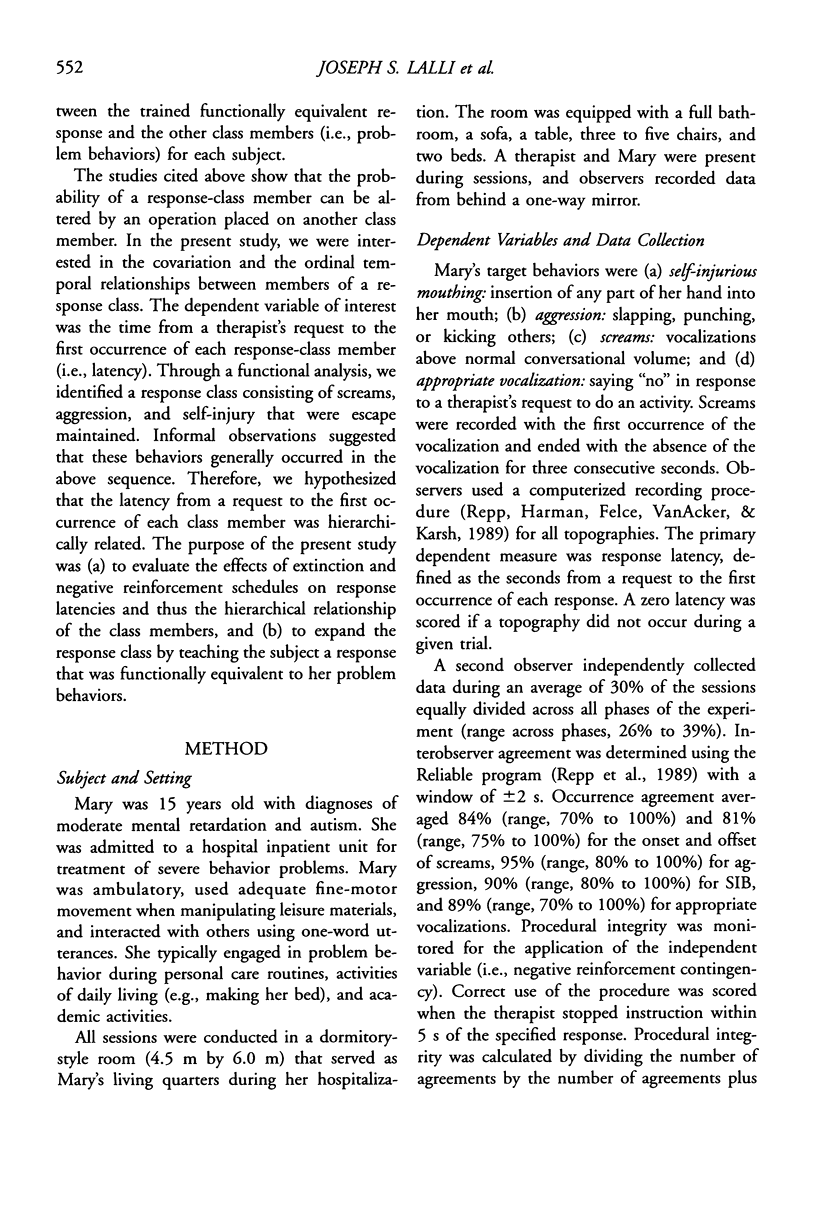


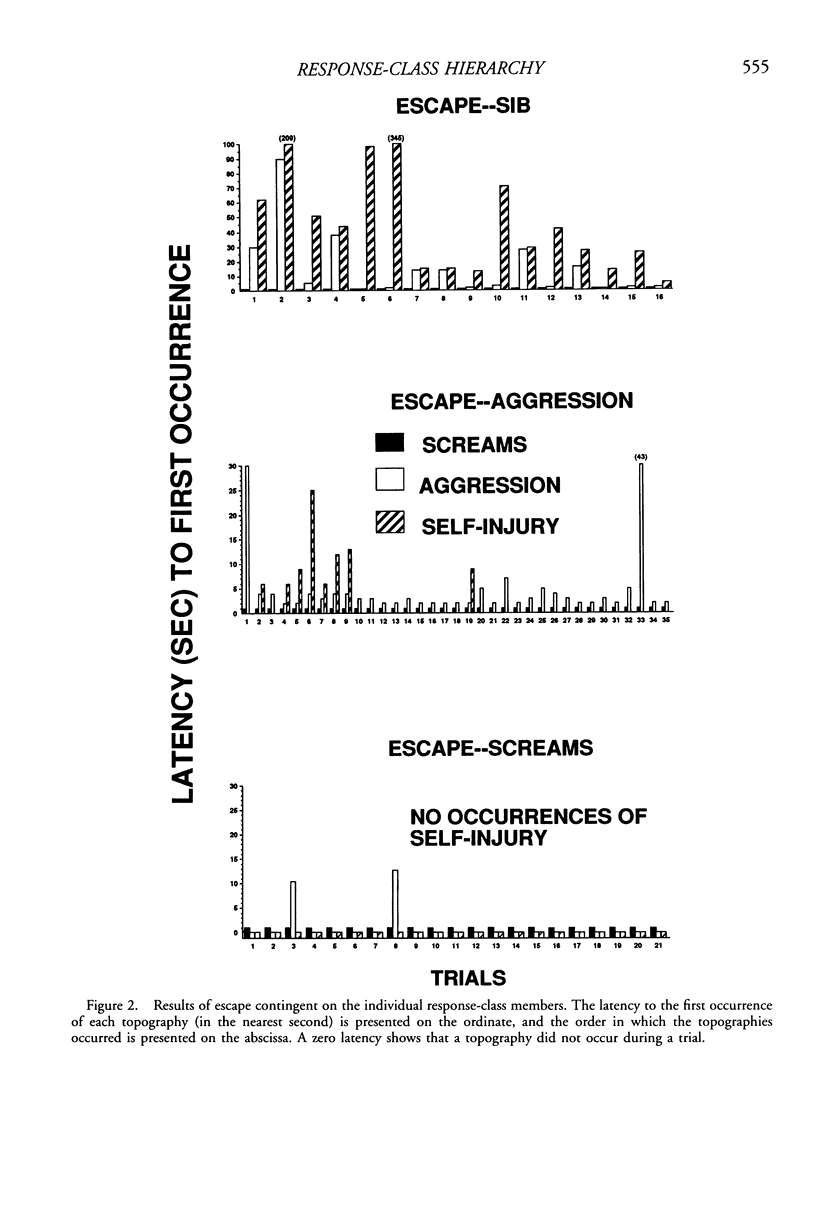

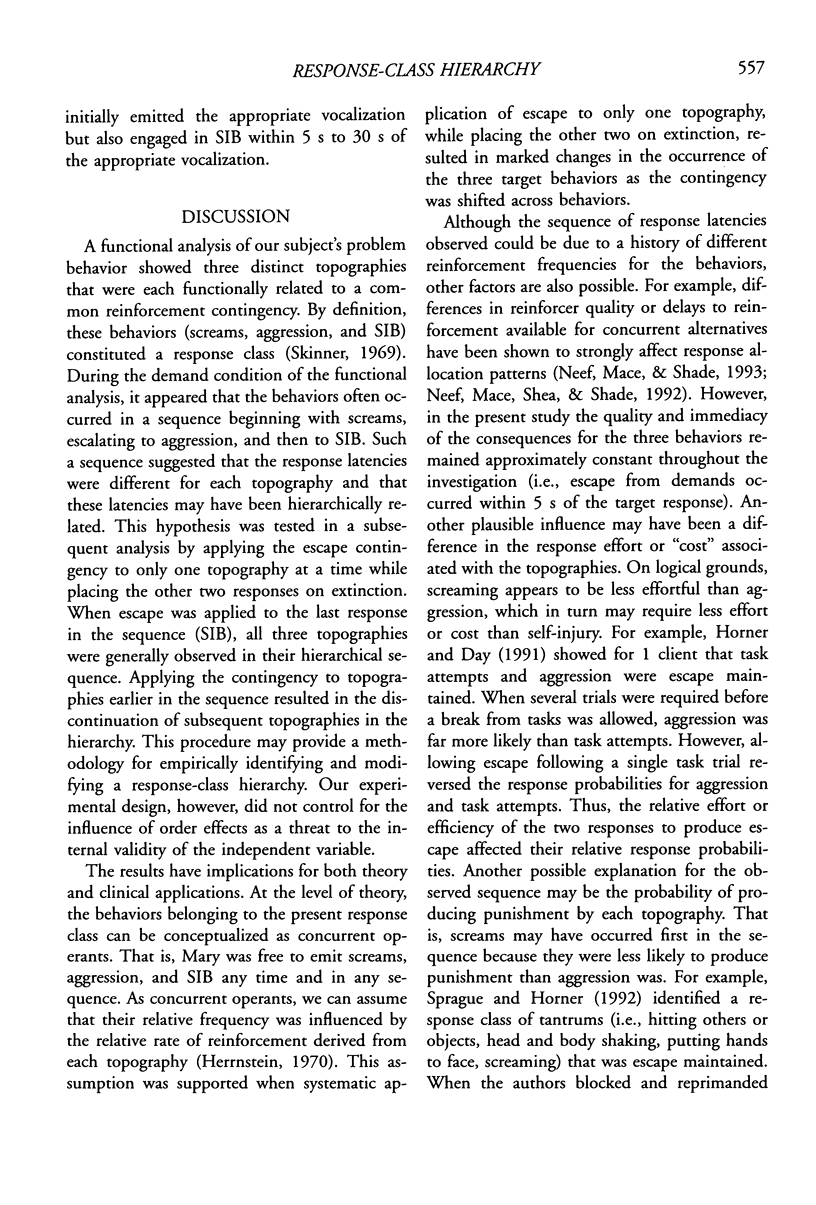
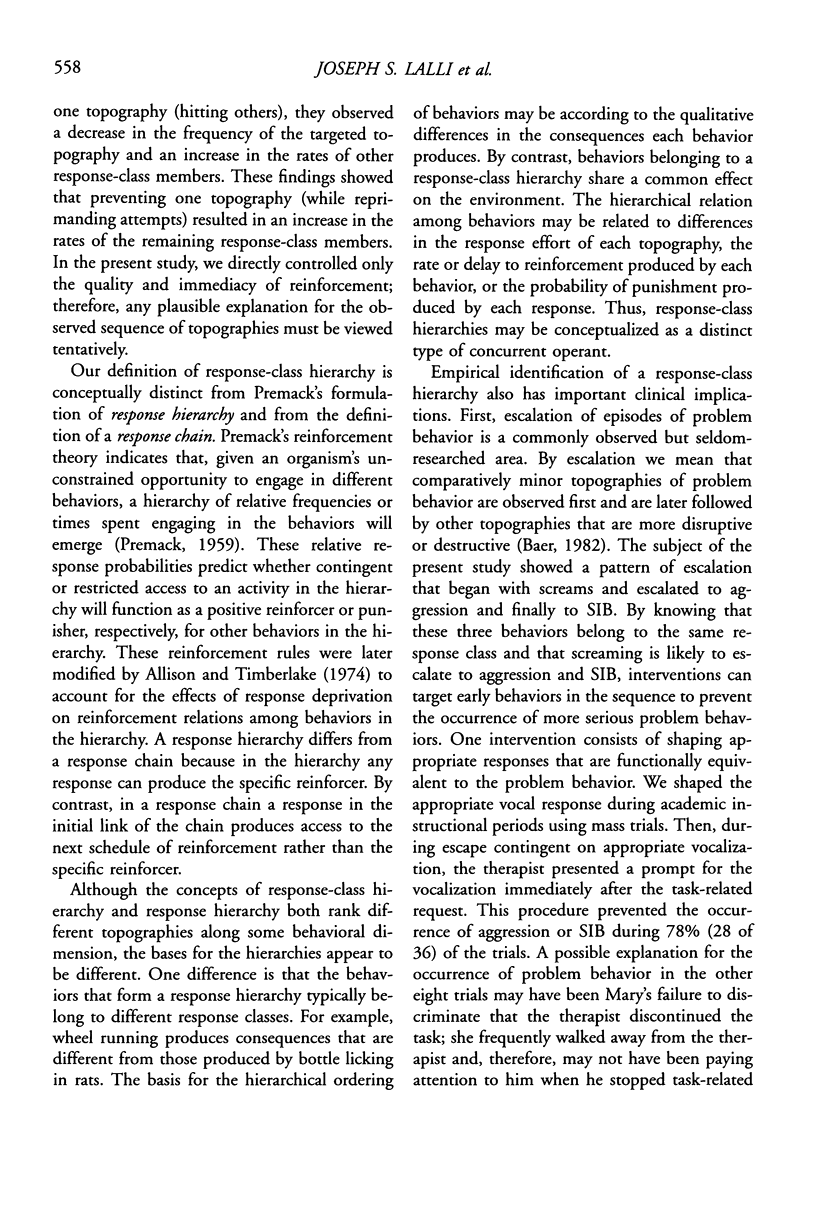
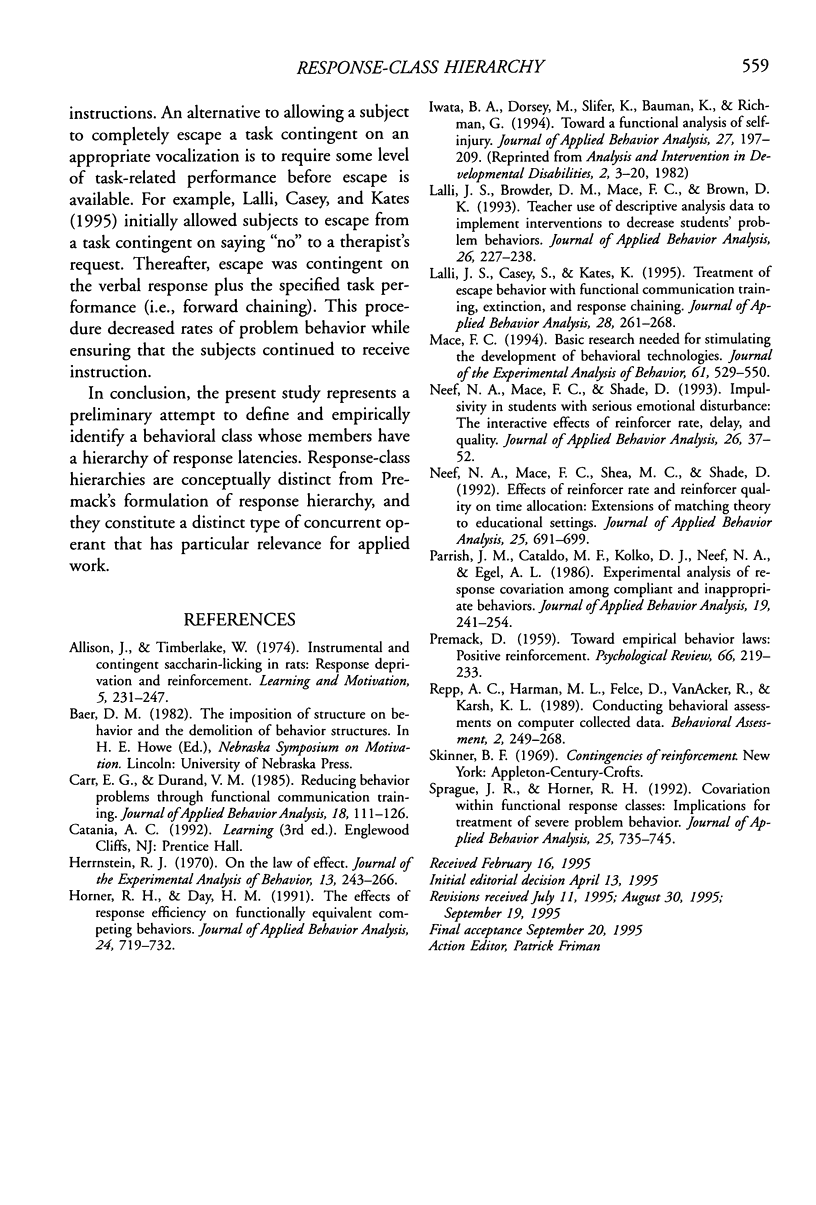
Selected References
These references are in PubMed. This may not be the complete list of references from this article.
- Carr E. G., Durand V. M. Reducing behavior problems through functional communication training. J Appl Behav Anal. 1985 Summer;18(2):111–126. doi: 10.1901/jaba.1985.18-111. [DOI] [PMC free article] [PubMed] [Google Scholar]
- Herrnstein R. J. On the law of effect. J Exp Anal Behav. 1970 Mar;13(2):243–266. doi: 10.1901/jeab.1970.13-243. [DOI] [PMC free article] [PubMed] [Google Scholar]
- Horner R. H., Day H. M. The effects of response efficiency on functionally equivalent competing behaviors. J Appl Behav Anal. 1991 Winter;24(4):719–732. doi: 10.1901/jaba.1991.24-719. [DOI] [PMC free article] [PubMed] [Google Scholar]
- Iwata B. A., Dorsey M. F., Slifer K. J., Bauman K. E., Richman G. S. Toward a functional analysis of self-injury. J Appl Behav Anal. 1994 Summer;27(2):197–209. doi: 10.1901/jaba.1994.27-197. [DOI] [PMC free article] [PubMed] [Google Scholar]
- Lalli J. S., Browder D. M., Mace F. C., Brown D. K. Teacher use of descriptive analysis data to implement interventions to decrease students' problem behaviors. J Appl Behav Anal. 1993 Summer;26(2):227–238. doi: 10.1901/jaba.1993.26-227. [DOI] [PMC free article] [PubMed] [Google Scholar]
- Lalli J. S., Casey S., Kates K. Reducing escape behavior and increasing task completion with functional communication training, extinction, and response chaining. J Appl Behav Anal. 1995 Fall;28(3):261–268. doi: 10.1901/jaba.1995.28-261. [DOI] [PMC free article] [PubMed] [Google Scholar]
- Mace F. C. Basic research needed for stimulating the development of behavioral technologies. J Exp Anal Behav. 1994 May;61(3):529–550. doi: 10.1901/jeab.1994.61-529. [DOI] [PMC free article] [PubMed] [Google Scholar]
- Neef N. A. Effects of reinforcer rate and reinforcer quality on time allocation: Extensions of matching theory to educational settings. J Appl Behav Anal. 1992 Fall;25(3):691–699. doi: 10.1901/jaba.1992.25-691. [DOI] [PMC free article] [PubMed] [Google Scholar]
- Neef N. A., Mace F. C., Shade D. Impulsivity in students with serious emotional disturbance: the interactive effects of reinforcer rate, delay, and quality. J Appl Behav Anal. 1993 Spring;26(1):37–52. doi: 10.1901/jaba.1993.26-37. [DOI] [PMC free article] [PubMed] [Google Scholar]
- PREMACK D. Toward empirical behavior laws. I. positive reinforcement. Psychol Rev. 1959 Jul;66(4):219–233. doi: 10.1037/h0040891. [DOI] [PubMed] [Google Scholar]
- Parrish J. M., Cataldo M. F., Kolko D. J., Neef N. A., Egel A. L. Experimental analysis of response covariation among compliant and inappropriate behaviors. J Appl Behav Anal. 1986 Fall;19(3):241–254. doi: 10.1901/jaba.1986.19-241. [DOI] [PMC free article] [PubMed] [Google Scholar]
- Sprague J. R., Horner R. H. Covariation within functional response classes: implications for treatment of severe problem behavior. J Appl Behav Anal. 1992 Fall;25(3):735–745. doi: 10.1901/jaba.1992.25-735. [DOI] [PMC free article] [PubMed] [Google Scholar]


